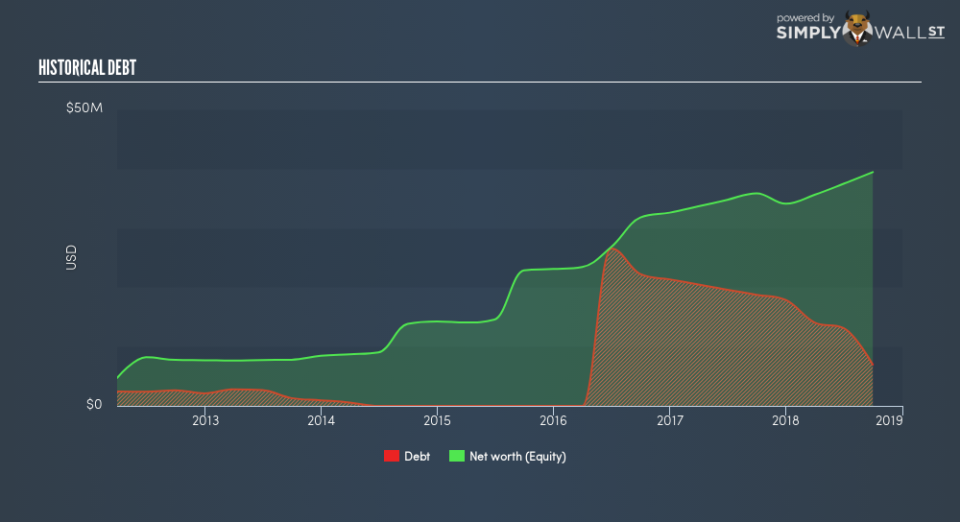Are DLH Holdings Corp.’s (NASDAQ:DLHC) Interest Costs Too High?

Want to participate in a short research study? Help shape the future of investing tools and you could win a $250 gift card!
Investors are always looking for growth in small-cap stocks like DLH Holdings Corp. (NASDAQ:DLHC), with a market cap of US$66m. However, an important fact which most ignore is: how financially healthy is the business? Assessing first and foremost the financial health is essential, since poor capital management may bring about bankruptcies, which occur at a higher rate for small-caps. I believe these basic checks tell most of the story you need to know. Nevertheless, since I only look at basic financial figures, I recommend you dig deeper yourself into DLHC here.
How does DLHC’s operating cash flow stack up against its debt?
Over the past year, DLHC has reduced its debt from US$19m to US$7.0m , which also accounts for long term debt. With this debt repayment, DLHC currently has US$6.4m remaining in cash and short-term investments for investing into the business. Additionally, DLHC has produced US$14m in operating cash flow during the same period of time, resulting in an operating cash to total debt ratio of 202%, indicating that DLHC’s current level of operating cash is high enough to cover debt. This ratio can also be interpreted as a measure of efficiency as an alternative to return on assets. In DLHC’s case, it is able to generate 2.02x cash from its debt capital.
Can DLHC pay its short-term liabilities?
At the current liabilities level of US$16m, it appears that the company has been able to meet these obligations given the level of current assets of US$17m, with a current ratio of 1.09x. For Professional Services companies, this ratio is within a sensible range as there’s enough of a cash buffer without holding too much capital in low return investments.
Can DLHC service its debt comfortably?
With a debt-to-equity ratio of 18%, DLHC’s debt level may be seen as prudent. This range is considered safe as DLHC is not taking on too much debt obligation, which can be restrictive and risky for equity-holders. We can check to see whether DLHC is able to meet its debt obligations by looking at the net interest coverage ratio. A company generating earnings before interest and tax (EBIT) at least three times its net interest payments is considered financially sound. In DLHC’s, case, the ratio of 8.17x suggests that interest is appropriately covered, which means that lenders may be less hesitant to lend out more funding as DLHC’s high interest coverage is seen as responsible and safe practice.
Next Steps:
DLHC has demonstrated its ability to generate sufficient levels of cash flow, while its debt hovers at a safe level. Furthermore, the company exhibits proper management of current assets and upcoming liabilities. This is only a rough assessment of financial health, and I’m sure DLHC has company-specific issues impacting its capital structure decisions. I recommend you continue to research DLH Holdings to get a more holistic view of the stock by looking at:
Future Outlook: What are well-informed industry analysts predicting for DLHC’s future growth? Take a look at our free research report of analyst consensus for DLHC’s outlook.
Valuation: What is DLHC worth today? Is the stock undervalued, even when its growth outlook is factored into its intrinsic value? The intrinsic value infographic in our free research report helps visualize whether DLHC is currently mispriced by the market.
Other High-Performing Stocks: Are there other stocks that provide better prospects with proven track records? Explore our free list of these great stocks here.
To help readers see past the short term volatility of the financial market, we aim to bring you a long-term focused research analysis purely driven by fundamental data. Note that our analysis does not factor in the latest price-sensitive company announcements.
The author is an independent contributor and at the time of publication had no position in the stocks mentioned. For errors that warrant correction please contact the editor at editorial-team@simplywallst.com.

